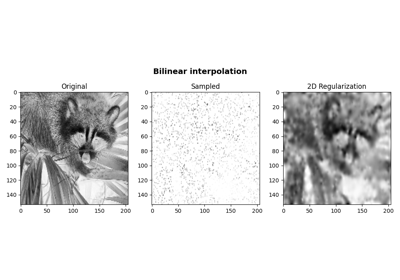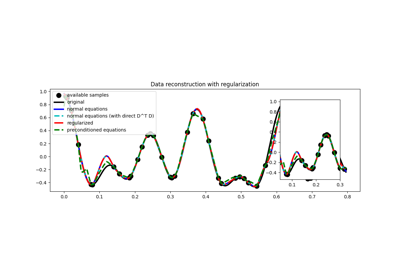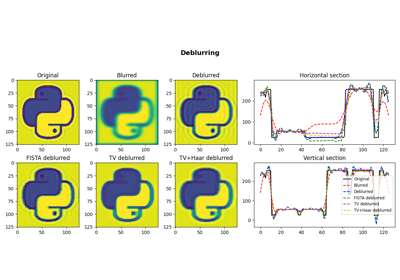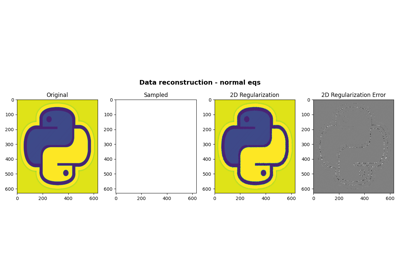pylops.optimization.leastsquares.NormalEquationsInversion¶
-
pylops.optimization.leastsquares.NormalEquationsInversion(Op, Regs, data, Weight=None, dataregs=None, epsI=0, epsRs=None, x0=None, returninfo=False, NRegs=None, epsNRs=None, **kwargs_solver)[source]¶ Inversion of normal equations.
Solve the regularized normal equations for a system of equations given the operator
Op, a data weighting operatorWeightand optionally a list of regularization termsRegsand/orNRegs.Parameters: - Op :
pylops.LinearOperator Operator to invert
- Regs :
list Regularization operators (
Noneto avoid adding regularization)- data :
numpy.ndarray Data
- Weight :
pylops.LinearOperator, optional Weight operator
- dataregs :
list, optional Regularization data (must have the same number of elements as
Regs)- epsI :
float, optional Tikhonov damping
- epsRs :
list, optional Regularization dampings (must have the same number of elements as
Regs)- x0 :
numpy.ndarray, optional Initial guess
- returninfo :
bool, optional Return info of CG solver
- NRegs :
list Normal regularization operators (
Noneto avoid adding regularization). Such operators must apply the chain of the forward and the adjoint in one go. This can be convenient in cases where a faster implementation is available compared to applying the forward followed by the adjoint.- epsNRs :
list, optional Regularization dampings for normal operators (must have the same number of elements as
NRegs)- **kwargs_solver
Arbitrary keyword arguments for chosen solver (
scipy.sparse.linalg.cgandpylops.optimization.solver.cgare used as default for numpy and cupy data, respectively)Note
When user does not supply
atol, it is set to “legacy”.
Returns: - xinv :
numpy.ndarray Inverted model.
- istop :
int Convergence information:
0: successful exit>0: convergence to tolerance not achieved, number of iterations<0: illegal input or breakdown
See also
RegularizedInversion- Regularized inversion
PreconditionedInversion- Preconditioned inversion
Notes
Solve the following normal equations for a system of regularized equations given the operator \(\mathbf{Op}\), a data weighting operator \(\mathbf{W}\), a list of regularization terms (\(\mathbf{R}_i\) and/or \(\mathbf{N}_i\)), the data \(\mathbf{d}\) and regularization data \(\mathbf{d}_{\mathbf{R}_i}\), and the damping factors \(\epsilon_I\), \(\epsilon_{\mathbf{R}_i}\) and \(\epsilon_{\mathbf{N}_i}\):
\[( \mathbf{Op}^T \mathbf{W} \mathbf{Op} + \sum_i \epsilon_{\mathbf{R}_i}^2 \mathbf{R}_i^T \mathbf{R}_i + \sum_i \epsilon_{\mathbf{N}_i}^2 \mathbf{N}_i + \epsilon_I^2 \mathbf{I} ) \mathbf{x} = \mathbf{Op}^T \mathbf{W} \mathbf{d} + \sum_i \epsilon_{\mathbf{R}_i}^2 \mathbf{R}_i^T \mathbf{d}_{\mathbf{R}_i}\]Note that the data term of the regularizations \(\mathbf{N}_i\) is implicitly assumed to be zero.
- Op :



